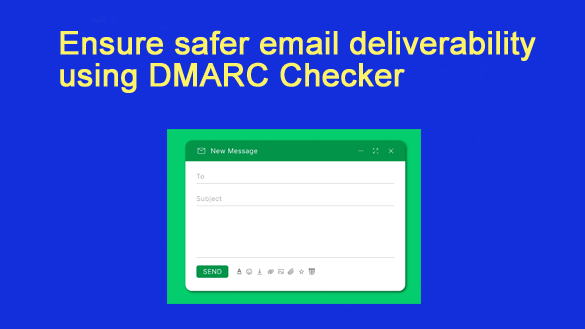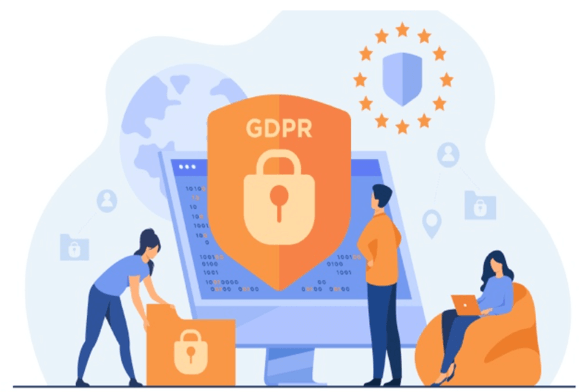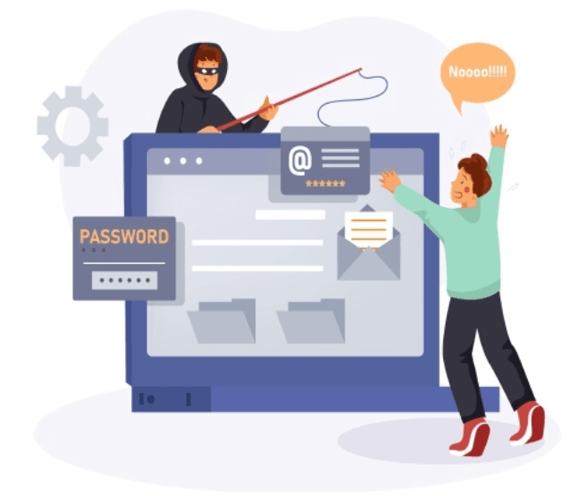 In the current landscape where digital communication takes precedence, email continues to be the most reliable medium for professional interactions. Nonetheless, increasing dangers such as phishing, spoofing, and business email compromise jeopardize both organizations and their clients.
In the current landscape where digital communication takes precedence, email continues to be the most reliable medium for professional interactions. Nonetheless, increasing dangers such as phishing, spoofing, and business email compromise jeopardize both organizations and their clients.
To enhance the security of email delivery, it is essential for businesses to implement robust authentication strategies.
Utilizing a DMARC checker is crucial in this effort, as it confirms the legitimacy of email sources, prevents unauthorized senders from accessing accounts, and helps maintain brand integrity. By leveraging this tool effectively, companies can safeguard confidential data, improve the likelihood of emails reaching inboxes, and bolster overall communication security.

Understanding the Basics of DMARC
What is DMARC?
DMARC is a protocol for authenticating emails that aims to safeguard domains against unauthorized access. It enhances current systems like SPF (Sender Policy Framework) and DKIM (DomainKeys Identified Mail). When domain owners adopt DMARC, they gain the ability to specify the actions that receiving mail servers should take with emails that do not pass authentication — such as delivering, quarantining, or rejecting them.
Why DMARC Matters for Businesses
DMARC offers organizations benefits beyond merely preventing phishing attacks. It enhances brand image, minimizes spam reports, and increases consumer confidence. When set up correctly, DMARC guarantees that only designated servers are permitted to send emails for a company, greatly lowering the chances of being impersonated.
Role of a DMARC Checker in Business Security
What is a DMARC Checker?
A DMARC checker serves as a diagnostic utility that assesses your DMARC policy setup and offers insights into the protection of your domain from email fraud. It examines DNS records, checks the alignment of SPF and DKIM, and identifies any weaknesses that could permit unauthorized emails to be sent.
Why Businesses Need It
- Prevents Domain Spoofing: Cybercriminals frequently manipulate email headers to disguise their messages as authentic. A DMARC verifier guarantees that only legitimate emails are allowed through.
- Improves Deliverability: Authenticated emails are given more credibility by email service providers (ESPs), which decreases the likelihood that genuine business communications will be classified as spam.
- Provides Transparency: DMARC reports provide insight into the individuals or entities that are sending emails using your domain.
- Protects Reputation: Protecting your brand’s reputation involves stopping fraudulent emails.
How DMARC Enhances Email Deliverability
Ensuring Alignment of SPF and DKIM
A significant challenge in ensuring emails are delivered successfully is the inconsistency between SPF and DKIM records, which can lead to legitimate messages being marked as unauthenticated. Utilizing a DMARC checker allows for the detection and verification of correct alignment, providing assurance that emails are validated securely. This approach significantly enhances the likelihood of emails landing in the recipient’s inbox instead of being categorized as spam.
Building Trust with Email Providers
Leading email services such as Gmail, Yahoo, and Microsoft emphasize the importance of authenticated messages to protect users from deceptive or questionable communications. By adopting DMARC, companies can ensure their emails are recognized as genuine, thereby enhancing their reliability and trust.
This practice not only bolsters the company’s reputation but also increases the chances of their emails landing in the main inbox instead of being directed to spam or promotions folders.
Reducing Bounce Rates
If email authentication is unsuccessful, some Internet Service Providers might completely block messages, which can hinder business communications. Utilizing a DMARC checker can mitigate these problems by identifying configuration errors promptly and notifying administrators. This preventative measure guarantees that essential emails are sent successfully and remain uninterrupted.
Benefits of Using a DMARC Checker for Business Communication
Strengthening Brand Protection
Deceptive emails that imitate real businesses can severely damage a brand’s image and rapidly erode customer trust. To safeguard against these risks, it is essential to adopt DMARC along with ongoing monitoring to uphold robust protection.
This multi-faceted strategy guarantees that only genuine and validated messages reach the intended recipients. As a result, companies not only bolster their security but also foster greater trust and dependability in every engagement with customers.
Enabling Better Decision-Making
DMARC validation tools generate comprehensive reports that offer IT and security teams valuable insights into possible email threats directed at their domain. This in-depth information enables organizations to swiftly identify unauthorized actions and reveal concealed weaknesses in their email systems.
The actionable data provided facilitates the enhancement and fortification of authentication policies. In the end, adopting this proactive strategy not only enhances overall security but also promotes safer and more dependable communication methods throughout the organization.

Compliance with Security Standards
Numerous sectors require strict compliance with cybersecurity standards to protect confidential information and uphold customer trust. By adopting DMARC, companies can defend themselves against email-related dangers while also ensuring they meet regulations like GDPR, HIPAA, and PCI-DSS. This approach enhances both security measures and regulatory compliance for businesses.
Step-by-Step Process of Using a DMARC Checker
- Generate and Publish a DMARC Record: Companies must establish a DMARC TXT record within their DNS settings. This record outlines the preferred policy (none, quarantine, or reject) along with the addresses for reporting.
- Verify Configuration with the Checker: A DMARC validator assesses both the format and correctness of the record. It verifies that SPF and DKIM settings are properly aligned.
- Monitor Email Traffic: The tool generates reports that analyze the sources of email traffic, pinpointing unauthorized senders who are trying to exploit the domain.
- Adjust Policies: Companies have the ability to transition from a monitoring-only approach (p=none) to more stringent measures (p=quarantine or p=reject) based on their analysis of email traffic.
- Maintain Ongoing Protection: DMARC requires ongoing maintenance rather than a one-off configuration. Consistently utilizing a checker helps keep your changing business systems and external email services in sync with your established policies.
Overcoming challenges with DMARC Implementation
Misconfigured SPF and DKIM
One common issue in email authentication stems from incorrectly set up SPF or DKIM records, potentially hindering message delivery. Utilizing a DMARC checker is essential for identifying these configuration problems promptly. By pointing out mistakes, it allows administrators to implement swift corrections, ensuring secure and dependable communication.
Balancing Security with Flexibility
Rigid DMARC policies can sometimes prevent legitimate emails from reaching their destination, especially when third-party services, such as marketing platforms, lack proper authorization. This can lead to unwarranted interruptions in business communications. Utilizing a DMARC checker helps strike an appropriate balance, providing robust security while ensuring dependable email delivery.
Continuous Monitoring Requirement
To maintain its effectiveness, DMARC requires ongoing supervision; failing to monitor it can result in overlooked attack indicators or misconfigured services. If left unattended, weaknesses may go undetected. Utilizing a DMARC checker simplifies this task by providing automated reports and prompt notifications, thereby enhancing continuous security.
Real-World Impact of DMARC Checkers
Case Study Example: E-commerce Business
An e-commerce business faced challenges with phishing attempts that mimicked its identity. Customers flagged deceptive emails that resulted in financial fraud. By adopting DMARC and utilizing a verification tool, the company was able to detect illegitimate mail servers responsible for the counterfeit messages. In just a few months, reports of phishing plummeted significantly, and customer confidence was regained.

Case Study Example: Financial Institution
A local bank faced challenges with email deliverability as important transactional messages were wrongly categorized as spam. By utilizing a DMARC checker, the team identified that the issue stemmed from misconfigured SPF records. Once they rectified these mistakes and implemented stringent DMARC policies, the bank saw a notable enhancement in email deliverability, guaranteeing the safe transmission of sensitive information to its clients.
Best Practices for Businesses Using DMARC Checkers
- Start with a Monitoring Mode: Start with a policy of “none” to observe email traffic prior to implementing more stringent regulations.
- Regularly Review Reports: DMARC verification tools offer essential information. Frequently analyzing these reports aids in identifying emerging threats and unapproved senders.
- Train Staff and IT Teams: Personnel responsible for overseeing email systems need to be educated on how to interpret DMARC reports and respond appropriately to the insights gained.
- Use Trusted Third-Party Services: Collaborating with trusted DMARC solution vendors guarantees enhanced analytics, automated processes, and professional support.
The Future of Email Security with DMARC
The landscape of email security is poised to center around authentication methods such as DMARC, especially as cyber threats become increasingly sophisticated. With the rise in phishing, spoofing, and business email compromise incidents, organizations can no longer depend on basic security protocols alone. DMARC provides a systematic approach to verifying messages and safeguarding domains, establishing itself as a fundamental element for resilient email security. As more companies move towards digital-first models, it is expected that regulators and email service providers will require DMARC compliance, further accelerating its implementation.
In the near future, DMARC verification tools are likely to become more sophisticated, integrating AI-driven insights, continuous monitoring, and predictive threat analysis to address new vulnerabilities. These improvements will not only enhance security but also boost email deliverability, fostering reliable communication across various sectors. By adopting DMARC and actively utilizing monitoring solutions, businesses can safeguard their communication pathways, uphold customer confidence, and stay ahead of the changing tactics of cybercriminals.